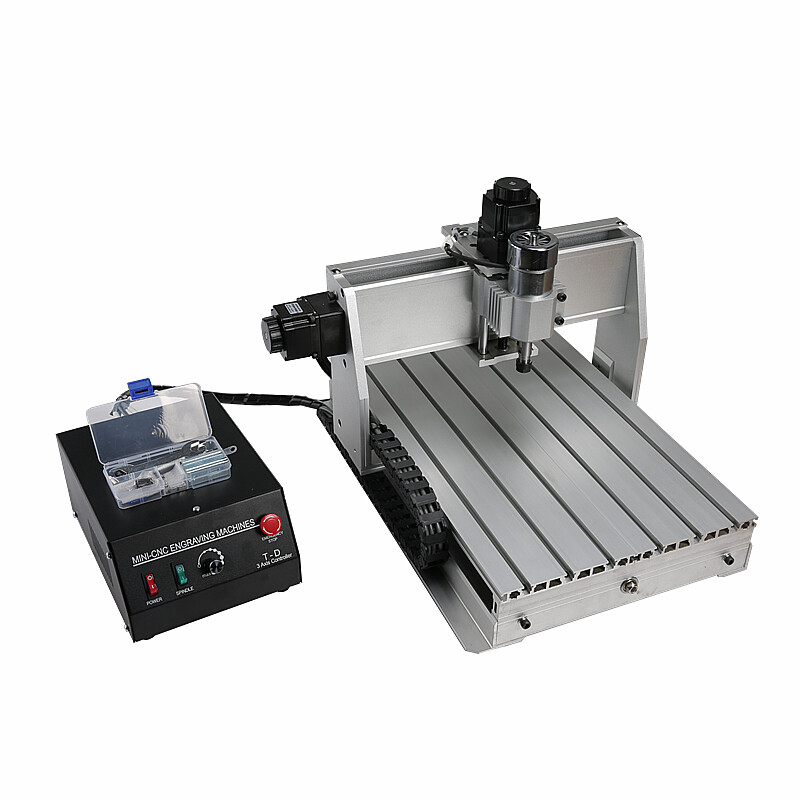Error sa format ng email
emailCannotEmpty
emailDoesExist
pwdLetterLimtTip
inconsistentPwd
pwdLetterLimtTip
inconsistentPwd

Balita
Milling Technology of PCB CNC Milling Machine
The milling technology of the PCB CNC milling machine includes the selection of cutting direction, compensation method, positioning method, frame structure, and cutting point.

Cutting direction and compensation method
When the milling cutter cuts into the plate, one of the cut surfaces always faces the cutting edge of the milling cutter, while the other side always faces the cutting edge of the milling cutter. The former has a smooth machined surface and high dimensional accuracy. The spindle always rotates clockwise. Therefore, when milling the external contour of PCB, the CNC milling machine with a fixed spindle and fixed spindle should adopt counterclockwise cutting. This is commonly known as reverse milling. However, when milling the frame or groove inside the PCB, the forward milling method is adopted. Milling plate compensation is that when milling plate, the machine tool automatically installs the set value so that the milling cutter automatically offsets half of the set milling cutter diameter with the center of the milling line, that is, the radius distance, so that the milling shape is consistent with the program setting. At the same time, if the machine tool has the function of compensation, it is necessary to pay attention to the direction of compensation and the command of using the program. If the error of using the compensation command will make the shape of the circuit board more or less equal to the length and width of the milling cutter diameter.
Positioning method and cutting point
There are two kinds of location methods; One is internal positioning, and the other is external positioning. Positioning is also very important for process developers. Generally, the positioning scheme should be determined when PCB is pre-manufactured.
Internal positioning is a general method. The so-called internal positioning is to select the mounting hole, plug hole, or another non-metallic hole in the PCB as the positioning hole. The relative position of the hole shall be on the diagonal and the hole with a large diameter shall be selected as far as possible. Metalized holes cannot be used. Because the difference in coating thickness in the hole will affect the consistency of the positioning hole you selected, it is easy to cause coating damage in the hole and the edge of the hole surface when taking out the board. Under the condition of ensuring PCB positioning, the fewer the number of pins is, the better. Generally, two pins are used for small plates and three pins are used for large plates. Its advantages are accurate positioning, small deformation of plate shape, high accuracy, good shape, and fast milling speed. Its disadvantage is that there are many kinds of hole diameters in the plate, and pins of various diameters need to be prepared. If there is no available locating hole in the plate, it is more cumbersome to discuss with customers to add locating holes in the plate during early production. At the same time, the milling template of each kind of plate is different, the management is more troublesome and the cost is higher.
External positioning is another positioning method, which is to add a positioning hole on the outside of the plate as the positioning hole of the milling plate. Its advantage is that it is easy to manage. If the product specification is good in advance, there are generally about 15 kinds of milling plate templates. Due to the use of external positioning, the board cannot be milled down at one time, otherwise, the PCB is very easy to be damaged, especially the panel, because the milling cutter and dust suction device will bring out the board, causing PCB damage and milling cutter fracture. The method of milling and cutting the joint point by sections is adopted. When the milling is finished, the program is suspended, and then the plate is fixed with tape. The second section of the program is executed, and the joint point is drilled off with a 3mm to 4mm drill bit. Its advantage is that the template is less, the cost is small, and it is easy to manage. It can mill all circuit boards without installing holes and positioning holes in the board. It is convenient for small craft personnel to manage. In particular, the production of early production personnel such as cam can be simplified, and the utilization of substrate can be optimized at the same time. The disadvantage is that due to the use of drill bits, at least 2-3 convex points are left in the PCB shape, which is not beautiful, and may not meet the requirements of customers. The milling time is long, and the labor intensity of workers is slightly high.
Frame and cutting point
The fabrication of the frame belongs to the early fabrication of PCB. The frame design has an impact not only on the uniformity of electroplating but also on the milling plate. For example, if the design is not good, the frame is easy to deform or some small waste blocks installed in small blocks are generated during milling, which will block the vacuum tube or break the high-speed rotating milling cutter. The deformation of the frame, especially when positioning the milling plate externally, will cause the deformation of the finished plate. In addition, the cutting point and processing sequence are well selected, It can maintain the maximum strength and the fastest speed of the frame.
For more information about pcb milling machine, pcb milling, cnc pcb milling, plz feel free to contact us.

